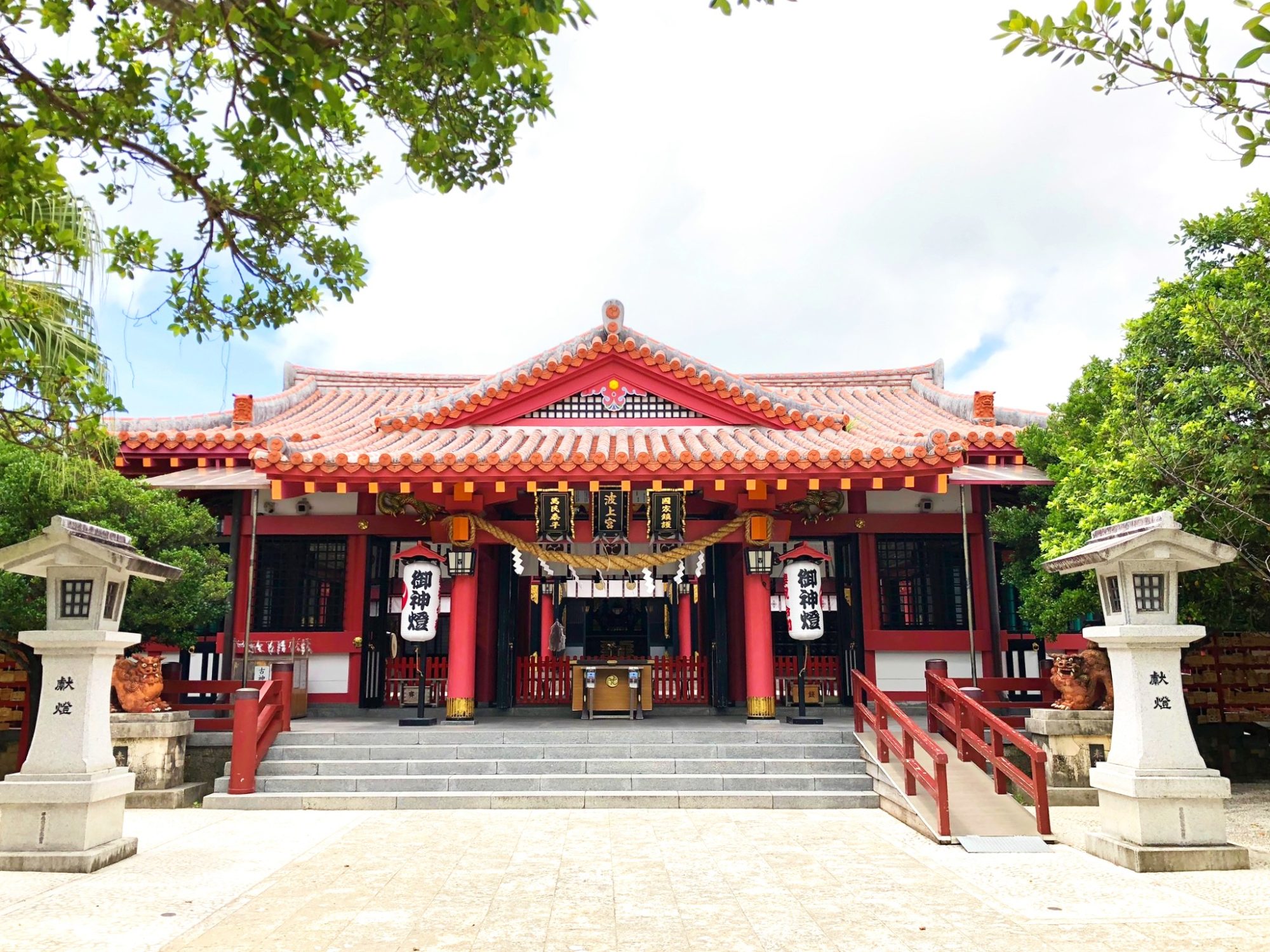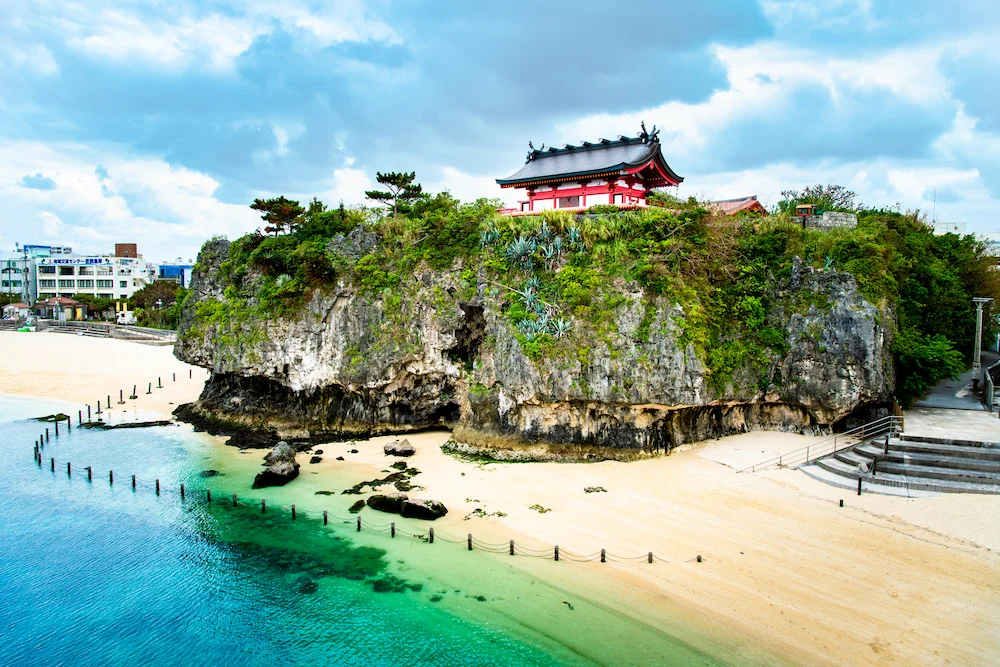

Naminoue Shrine
Okinawa's primary shrine, perched dramatically on a cliff overlooking the emerald sea.
Naminoue-gu ('Shrine Above the Waves') is the most important Shinto shrine in Okinawa, serving as the spiritual guardian for the people of the Ryukyu Islands for centuries.
History of the Shrine
Since ancient times, the prominent cliff on which the shrine stands was known to locals as 'Hana-gusuku' (Flower Castle) and was revered as a sacred space ('utaki'). From this high perch, people would pray to the sea god Nirai Kanai, the mythical paradise across the ocean from which all life and blessings were believed to originate. They prayed for bountiful catches, safe voyages, and peace for their land.
The formal establishment of a shrine building is thought to have occurred in the 14th century. It became the primary shrine for the Ryukyu Kingdom, where the king would pray for the prosperity and stability of the nation. The shrine became a center for a unique blend of Japanese Shinto, Buddhism, and indigenous Ryukyuan religious beliefs. The shrine was almost completely destroyed during the Battle of Okinawa in 1945 but was rebuilt in the post-war years, becoming a powerful symbol of peace, resilience, and the enduring spirit of the Okinawan people.
The Enshrined Kami
Naminoue Shrine is dedicated to a number of kami, with the principal deities being the 'Kumano Gongen' from mainland Japan, which includes the great creator goddess Izanami-no-mikoto. As the mythical mother of the Japanese islands, her enshrinement here connects the Ryukyu Islands to the broader Japanese pantheon. She is a powerful kami of creation and safe childbirth.
Other enshrined kami include Hayatamao-no-mikoto and Kotosaka-no-o-no-mikoto, both sea-related deities. This collective of kami acts as the 'sochinju', or overall guardian, of Okinawa. They are prayed to for peace for the nation, prosperity from the land and sea, and the well-being of the people, blending the traditions of Shinto with the deep Okinawan reverence for the ocean.
What to See
The shrine sits on a high limestone cliff overlooking Naminoue Beach and the port of Naha. The main hall is built in a distinctly Okinawan style, with a red-tiled roof and decorations featuring dragons and other motifs characteristic of Ryukyuan culture, making it visually different from shrines on mainland Japan. The vibrant colors stand out against the blue Okinawan sky and sea.
From the shrine's viewing platform, you can look out over the East China Sea. The shrine is a popular spot for locals to celebrate New Year's, weddings, and to purchase special Okinawan-style 'omamori' (charms), some made with traditional 'bingata' dyed cloth. The juxtaposition of the sacred shrine, the public beach below, and a major bridge nearby creates a unique urban landscape.
Major Festivals
The 'Naminoue-gu Reisai' in May is the shrine's largest festival. It's a vibrant celebration featuring traditional Ryukyuan dance and music, a parade, sumo wrestling, and even a tug-of-war competition. The festival is a prayer for peace, a bountiful harvest, and good fishing, showcasing the unique cultural heritage of Okinawa. The New Year's period is also extremely popular, with a festive atmosphere that lasts for several days.
Support Naminoue Shrine
Your participation helps preserve this sacred site for future generations. Every digital offering contributes to real shrine preservation efforts across Japan.
By making an offering, you become part of a global community honoring Japanese spiritual traditions and supporting the cultural heritage that has been cherished for centuries.